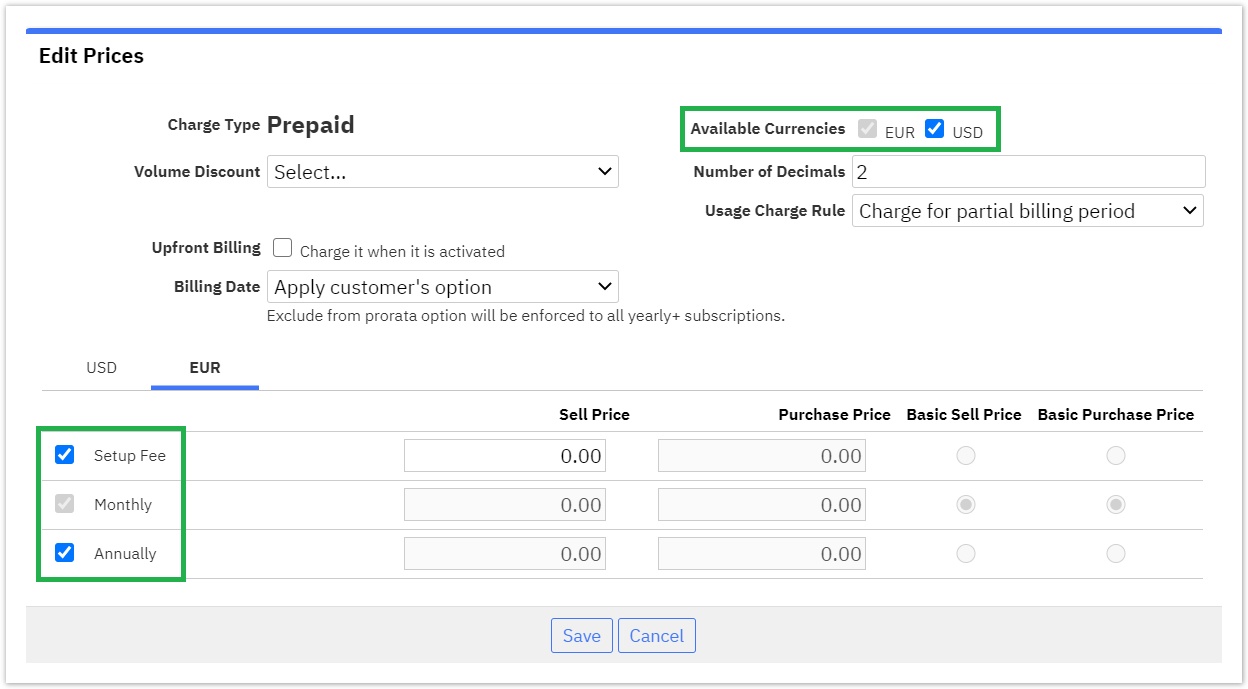Versions Compared
Key
- This line was added.
- This line was removed.
- Formatting was changed.
| Excerpt |
|---|
You are now able to create a Bundle product, for packaging two or more solutions that complement each other, and offer it as a single SKU to your customers and resellers. The first version of Bundling will support only subscription-based bundles (named sub-subscriptions) that consist of two or more recurring products or add-ons. For a product to be included in a Bundle, it must be available to all units and currencies the bundle supports and it can participate in the Bundle with more than one license, whenever applicable. The cost and sell price of a Bundle is calculated automatically from the pricing rules you have defined for its products (also known as sub-products). |
Creating a Bundle
For creating a new Bundle you can select the "Add Product Bundle" option from the "Add" menu, residing under the BSS Home > Products > Products List.
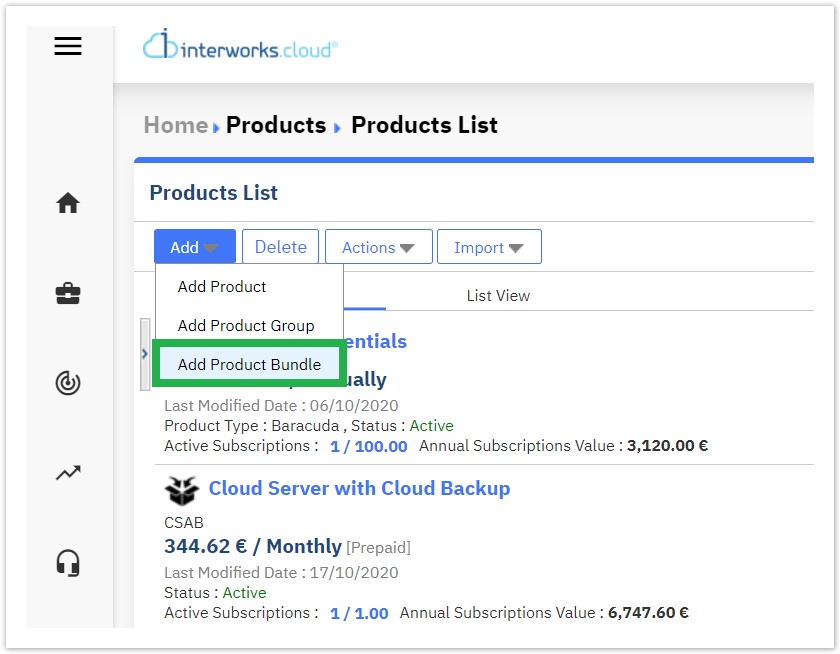
This action will load the new Bundle form. In this form you can define the following:
Generic fields (green color): A Bundle has the same generic fields as the rest of the products. You can define its name, its code, its category, etc.
Available units and currencies (blue color): You can define which are the available units and currencies you wish to offer for that Bundle. Since in the first version, we only support subscription-based Bundles, the available units are only the recurring units. Since in the first version, we only support subscription-based Bundles, the available units are only the recurring units.
- Base Unit (last option of the blue colored section): With this option, you can define which of the "Available Units" will be the Bundle's default unit. A Bundle can have a different base unit than that of the organization's default base unit.
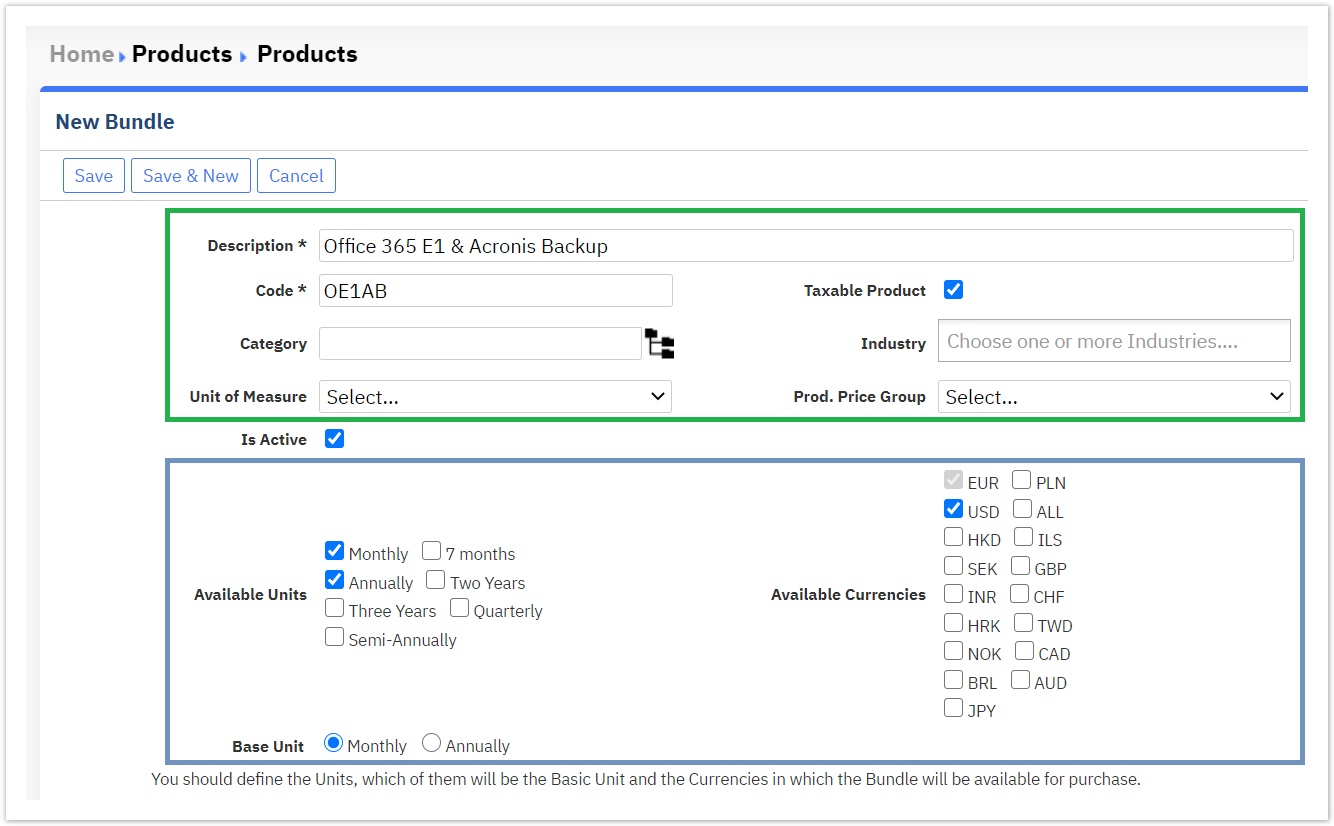
By pressing "Save",a new Bundle will be created with the options you have defined. After saving a Bundle, you will be able to change the available units and currencies until you add the first sub-product. After adding the first sub-product, these fields become locked.
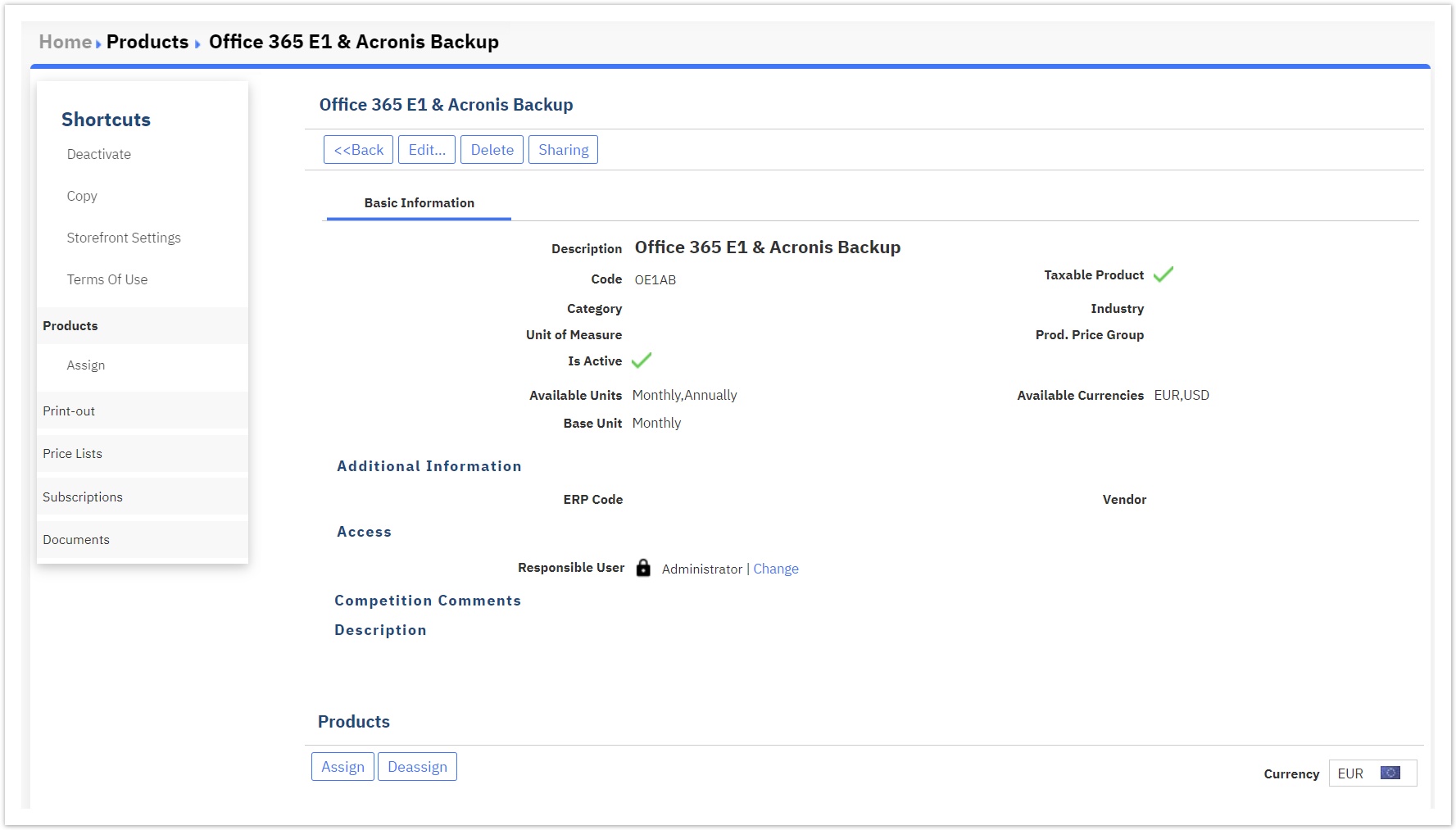
| Rw ui textbox macro | ||
|---|---|---|
| ||
After saving your Bundle, the available units and currencies can be changed only from the "Pricing" section as for the rest of the products. For more information, please read the following rules (and especially rule #5) to better understand the Bundle's dependencies.
|
Rules for Currency and Units' Availability
Below is a list of rules that our platform applies for Bundle products concerning the Available Currency and Available Units:
All the sub-products of a Bundle can be available only based on the Bundle’s defined basic fields of units/currencies.

After the creation of a Bundle product and the assignment of at least one sub-product, the editing becomes limited, meaning that the "Available Currencies" and "Available Units" defined during the Bundle's creation become locked and cannot be altered.
The sub-products that can be chosen after the creation of a Bundle, are always bound to the "Available Currencies" and "Available Units", meaning that a Bundle's sub-products must support all the chosen "Available Currencies" and "Available Units".
- By editing the currencies of the Pricing section via the "Edit Recurring Charges" button, you can remove a Bundle's available currency by removing that currency. For example, if the Bundle product was offered with both Euro and US Dollar currencies, by removing the Euro, the Bundle can only be purchased with US Dollars. However, all included sub-products must continue to support all the predefined "Available Currencies".
The only way to fully edit a Bundle product is to first make sure that the Bundle has not been purchased by anyone and then you may proceed with removing all the sub-products and sub-add-ons that it contains. Only then the Bundle product will provide you with full edit capabilities.
Defining the Bundle Products
The next step is to define the products that will be included in this Bundle. You can select the "Assign"(1) action button from the "Products" section. This action will display a search form (2) for defining the product you wish, in order to choose them (3) and finally add (4) them to the Bundle as sub-products. This pop-up window includes only products that are available to all predefined Bundle units and currencies, during the Bundle's creation (even if you have later edited one of its currencies).
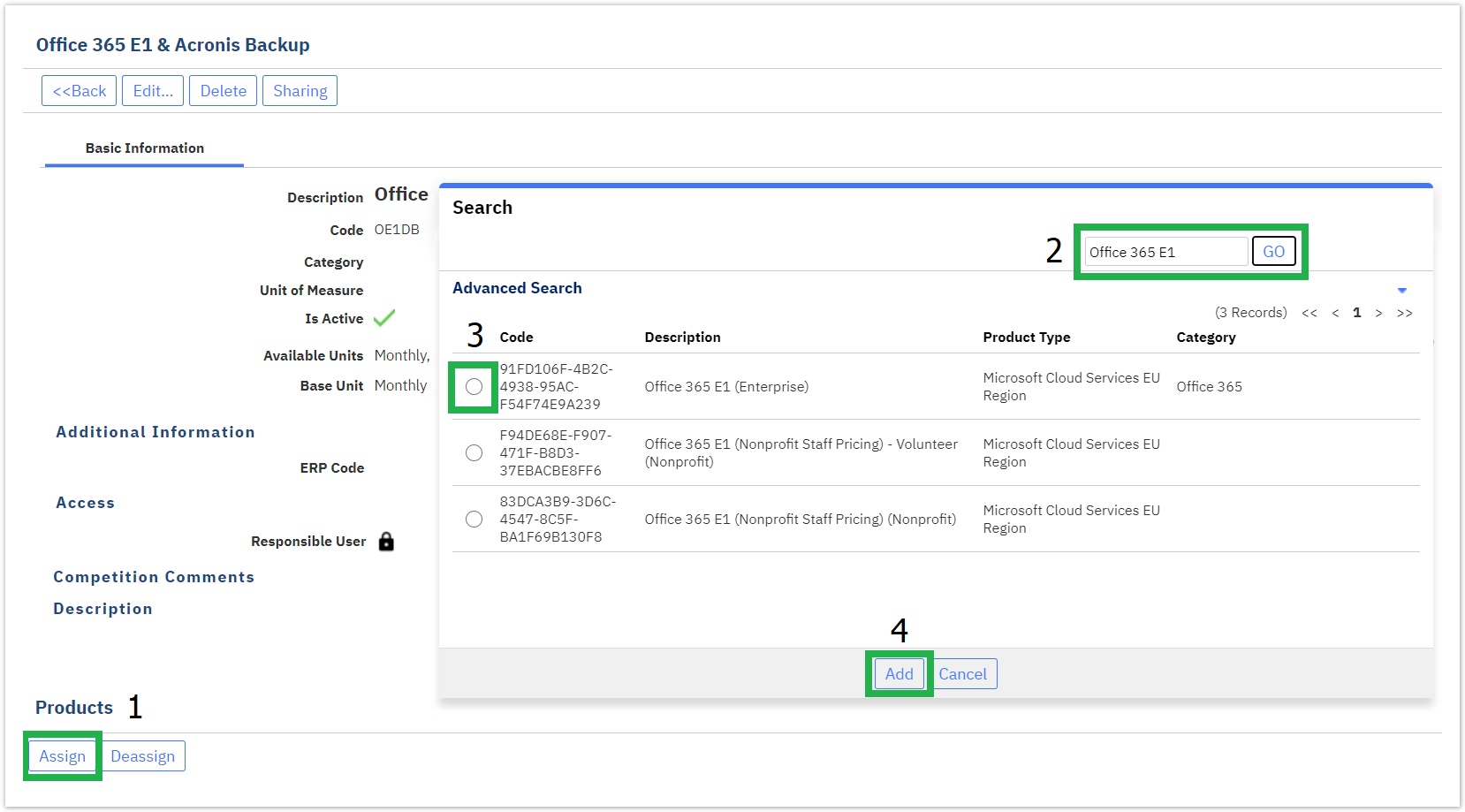
In a Bundle product, you can also add configurable products such as cloud servers. The configuration of those products becomes available during the Ordering Process.
The product you have selected will be displayed in the "Products" section for defining how this product will participate in the Bundle.
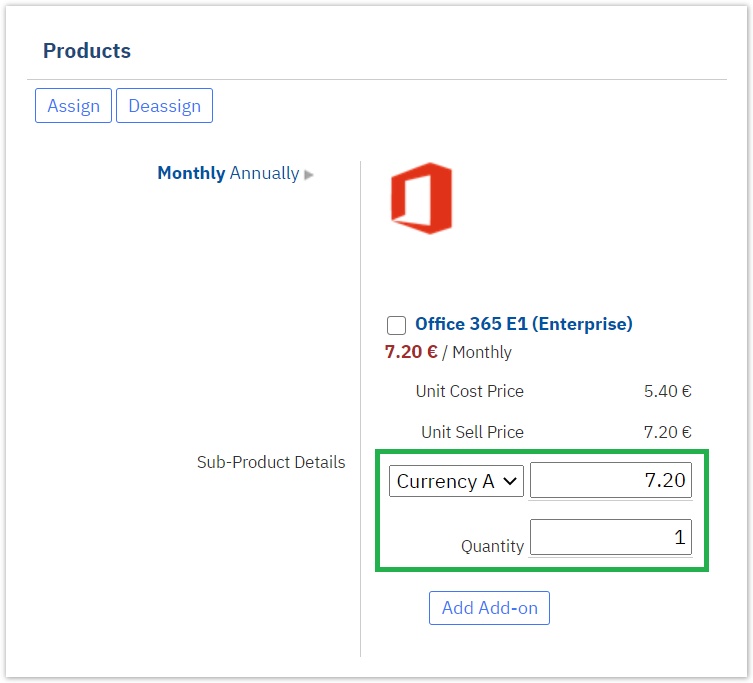
Pricing rule: Is where you can define how this sub-product will contribute to the calculation of the sub-product's Bundle price. You have the following options:
Currency Amount: Use this option if you want to define a fixed price (e.g. $7).
Percent of Sell Price: Use this option if you want to define a discounted price by setting the discount percentage (e.g. 5 [for 5% off]).
Percent Markup/Percent Margin - Cost Price. The last two options can be used for defining the price as a margin or markup above its cost price.
Quantity. Define how many licenses of this product will be included in one Bundle license.
| Rw ui textbox macro | ||
|---|---|---|
| ||
Rules
|
You can execute the above process for each product you wish to add to the Bundle. All Bundle products will be displayed in the same section, one next to each other.
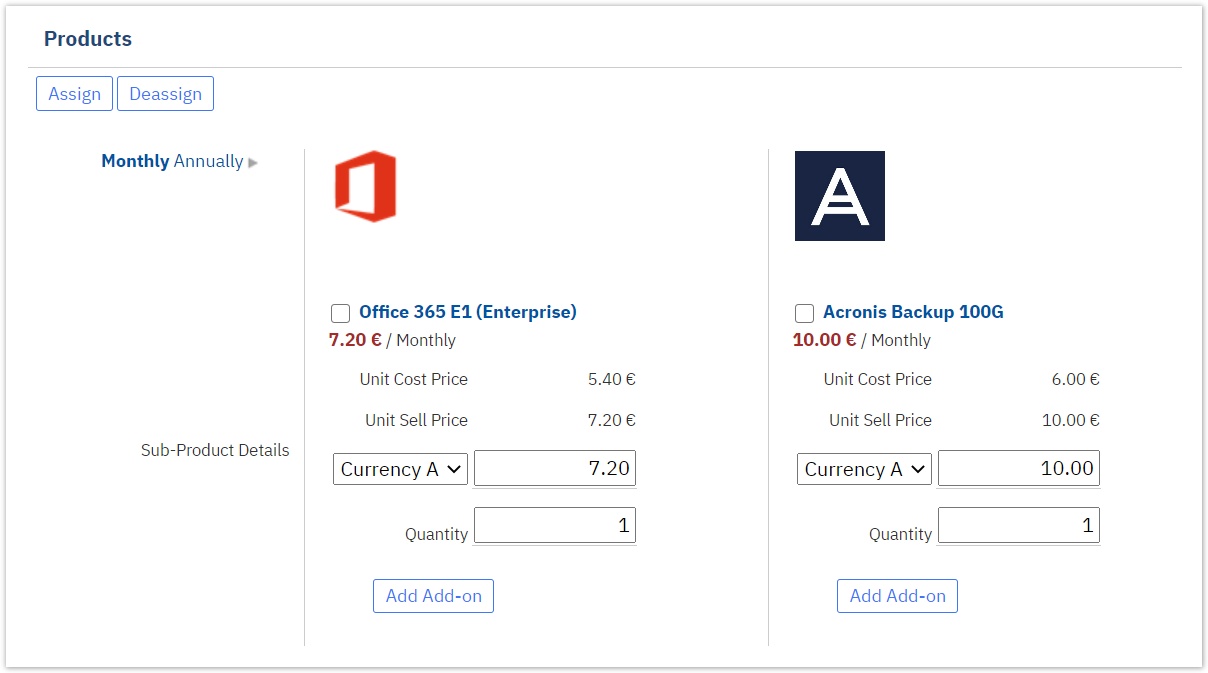
| Rw ui textbox macro | ||
|---|---|---|
| ||
CAUTION - Rule after Ordering a Bundle Product After ordering a Bundle product, there can be no change in the Bundle's sub-products and sub-add-ons, in terms of adding new ones or removing them. Only the Pricing fields remain unlocked for editing the prices of the sub-products. |
| Rw ui textbox macro | ||
|---|---|---|
| ||
Price-Protected Products in a Bundle Product Price-protected products can be assigned within a Bundle product as sub-products. You are also capable of editing the prices. When a price-protected product is added to a Bundle product, this does not mean that the Bundle product becomes price-protected. Only the sub-product remains price-protected.
|
Viewing the Bundle Products in Different Billing Cycles
You need to define the pricing rule only in the Bundle's default unit and for the rest units, the price is calculated automatically.
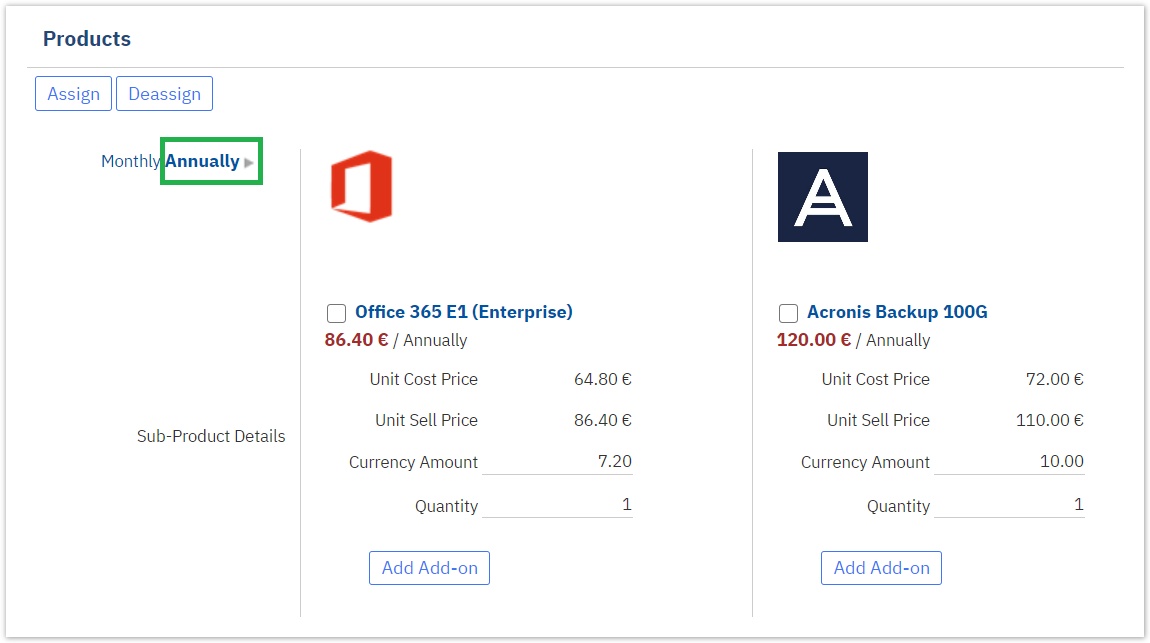
Viewing the Bundle Products in Different Currency
You can view which are the prices of the Bundle products in a different currency by changing the currency from the top right option.
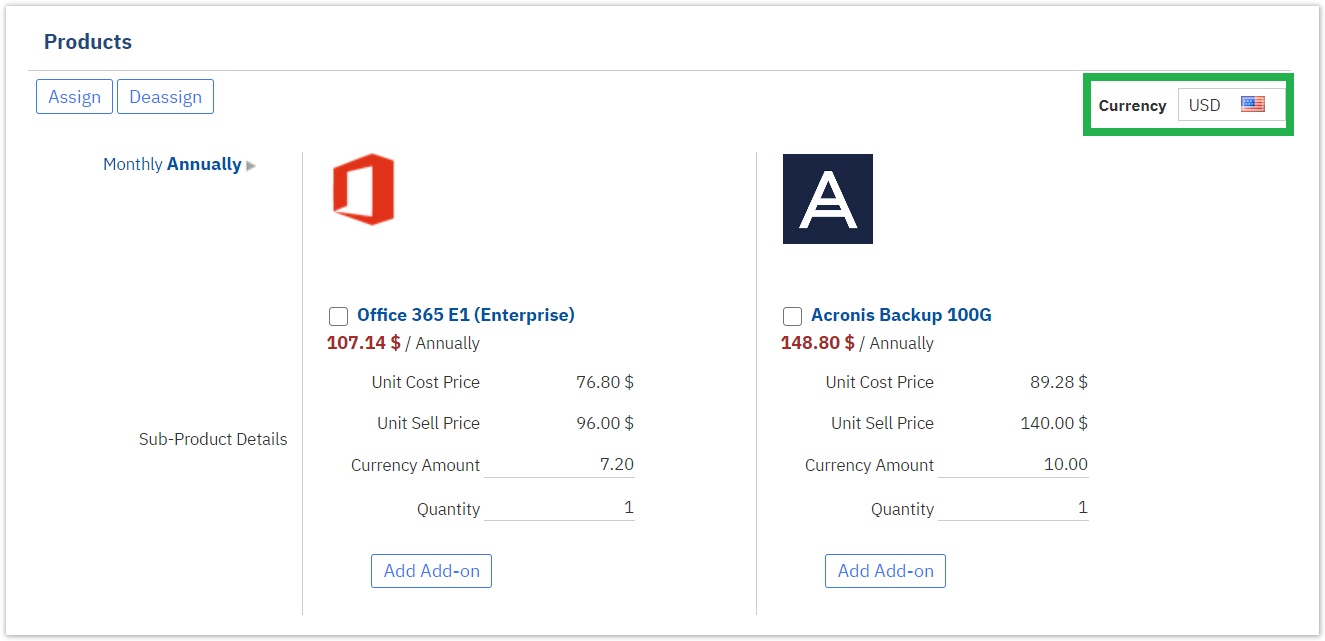
| Rw ui textbox macro | ||
|---|---|---|
| ||
The "pricing rule" and the quantity fields are available regardless of which currency you view but any change you may do it will be applied to all currencies. Both the pricing rule and the quantity are common for all currencies. |
Adding an Add-on as a Bundle Sub-Product
If you want your Bundle to include an add-on, you must include first in your Bundle a primary product that has this add-on. Then from the "Add Add-on" action, that is available for each Bundle sub-product, you will be able to add an add-on too.
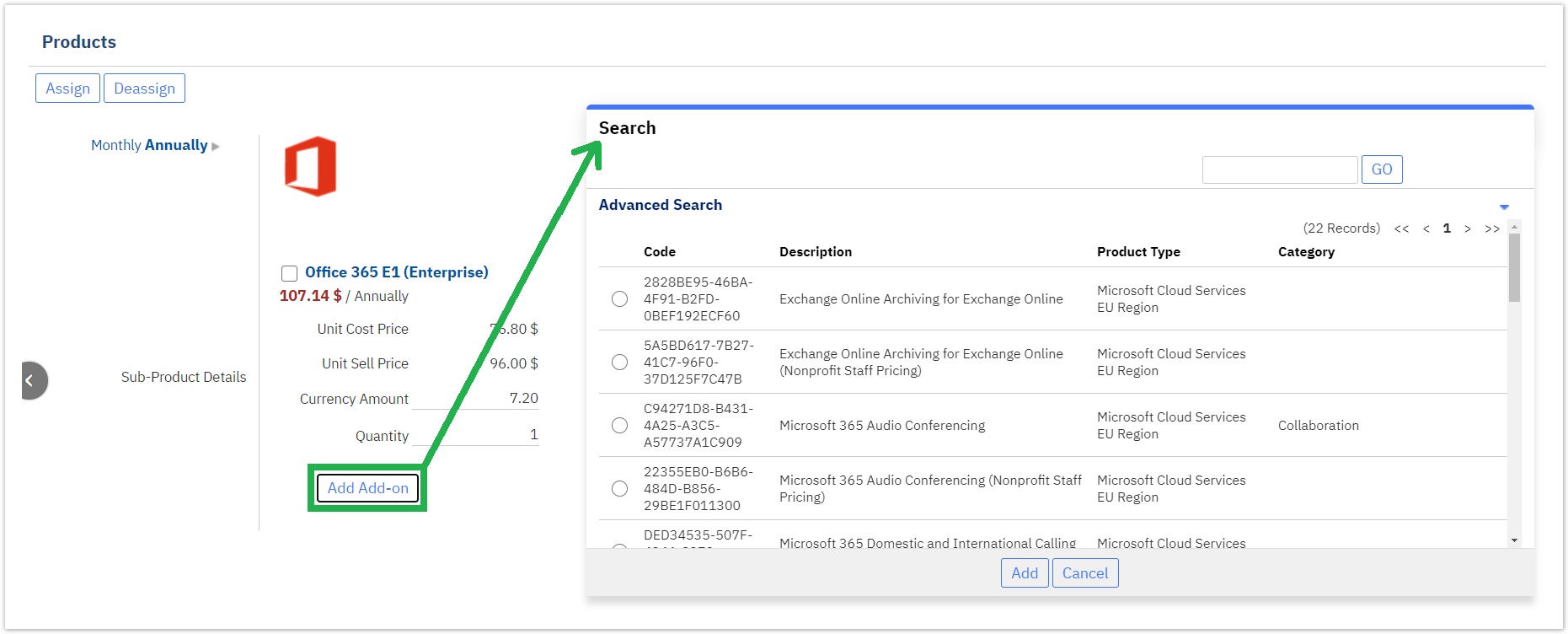
The pop-up form displays only the add-ons that are:
Available for the selected product,
Available to all Bundle units and currencies.
The selected add-on will be added in the "Products" section, as a sub-product, for setting its parameters.
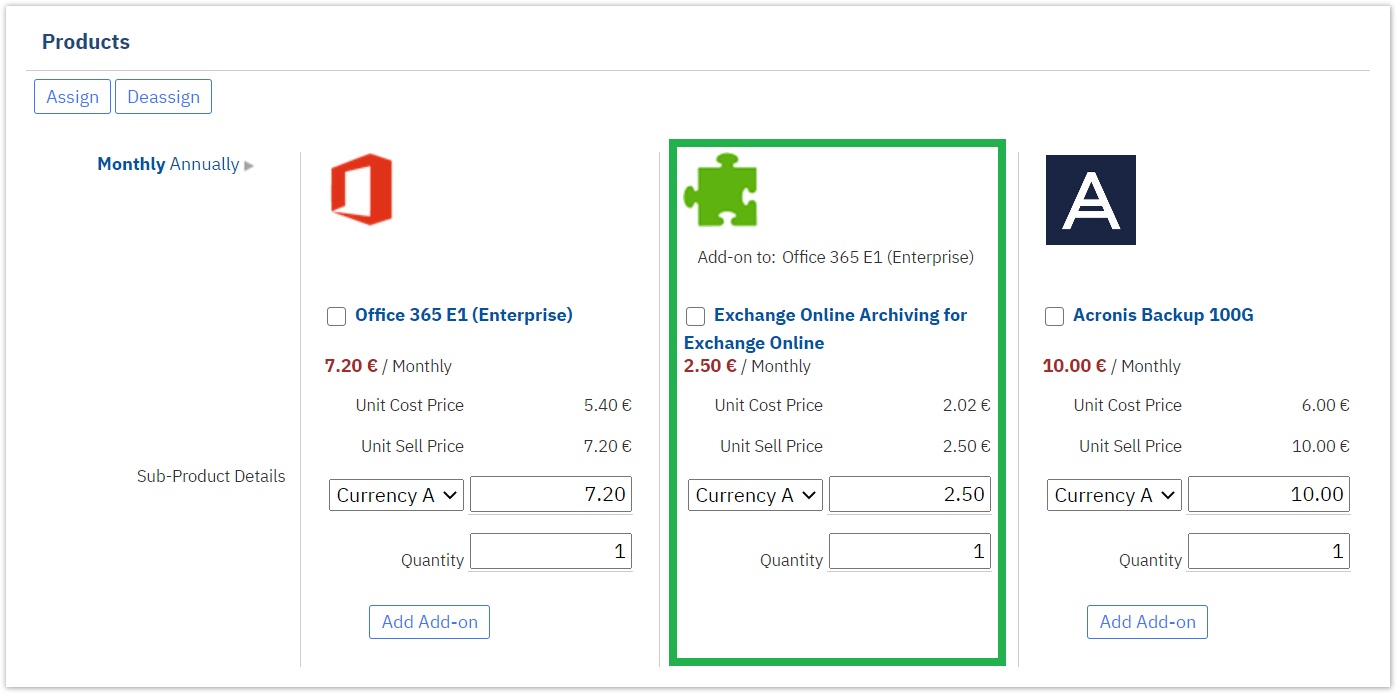
Understanding the Product Characteristics of a Bundle Product
The "Product Characteristics" of a Bundle product are comprised of the entirety of the sub-products that were added in that Bundle. As a result, a Bundle's Product Characteristics will always display the sub-products and sub-add-ons that the Bundle contains. Since Bundle products do not have a product type they inherit their Product Characteristics from the contained sub-products, as illustrated in the following image.
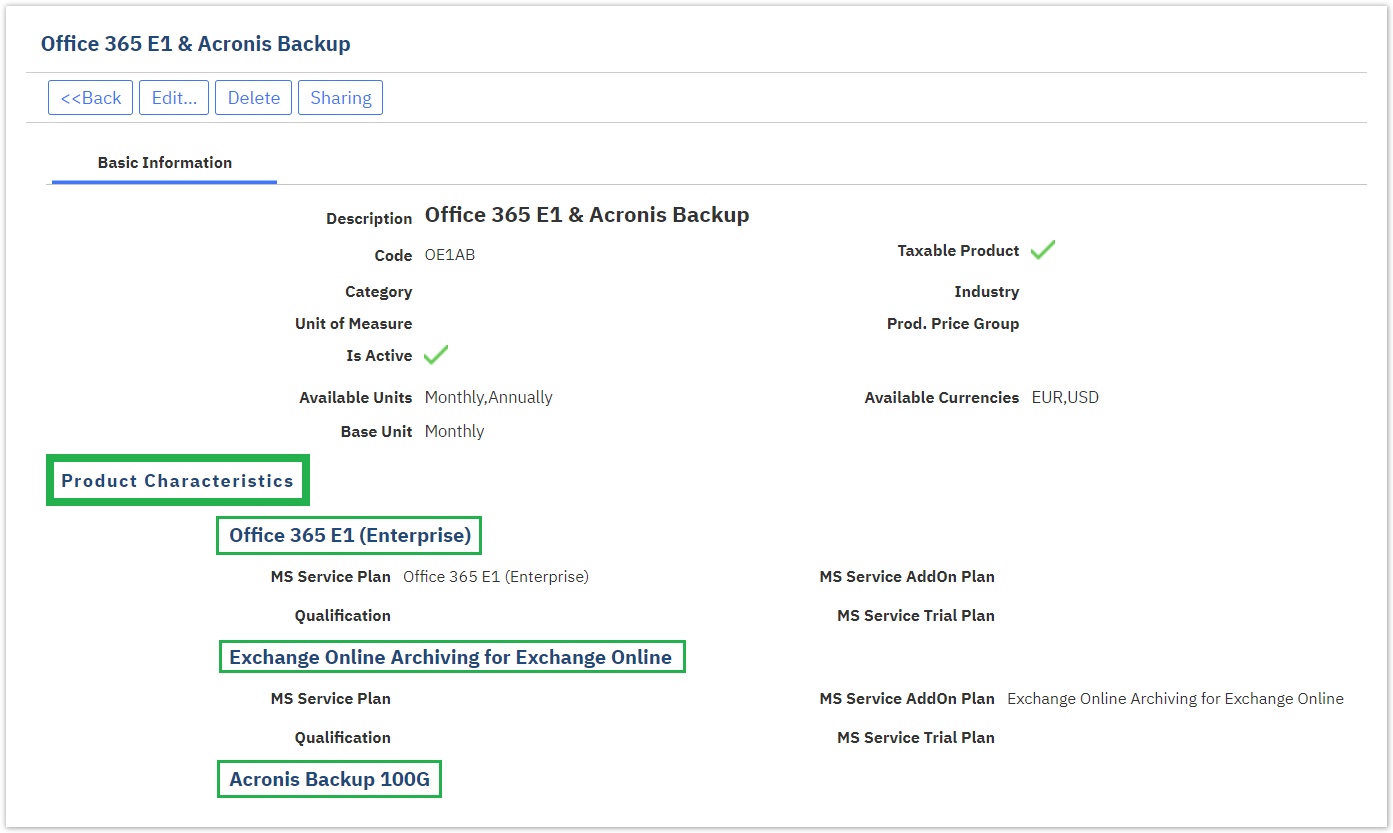
Understanding how Bundle Prices are calculated
The cost and sell price of a Bundle is calculated automatically from the pricing rules, you have defined for its sub-products.
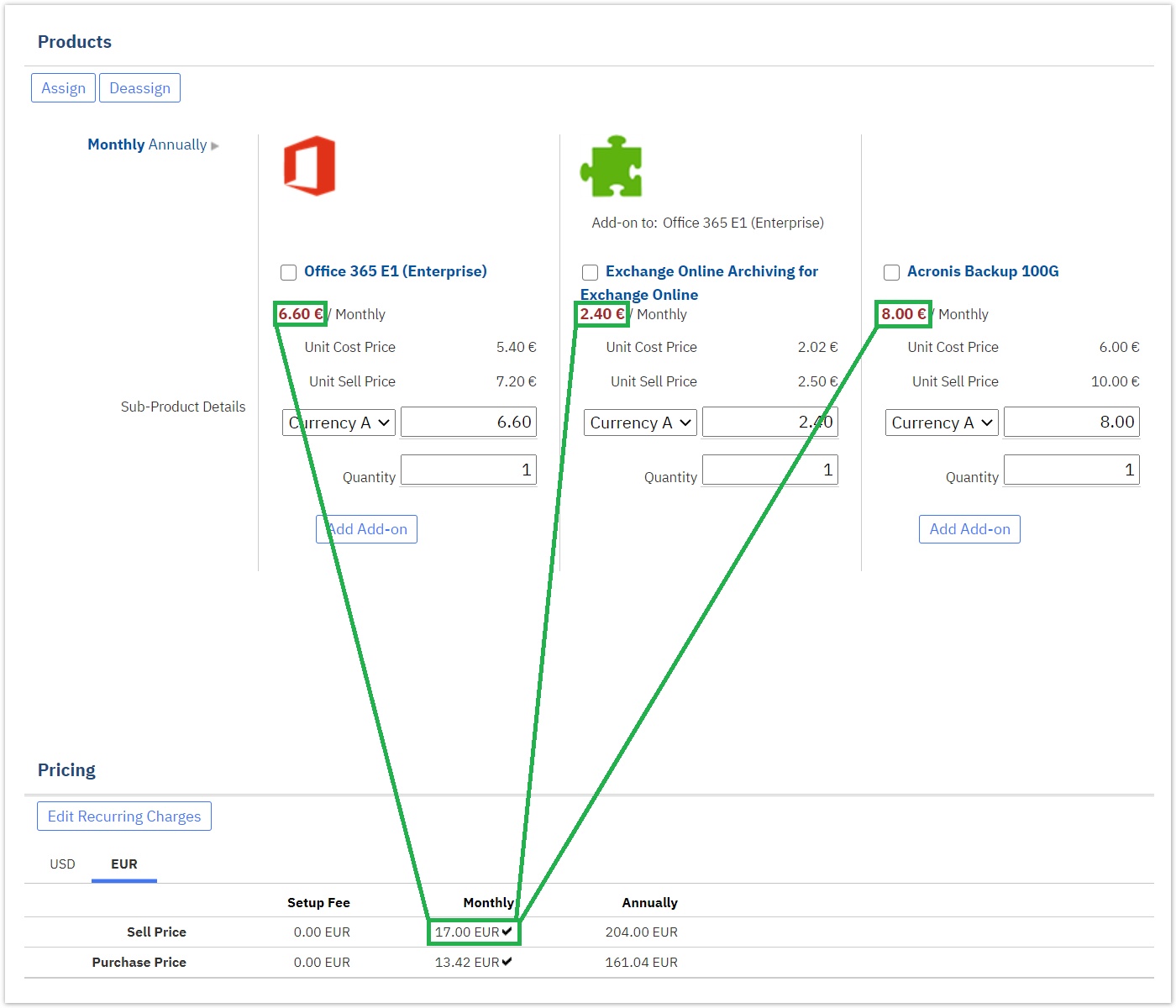
The prices for a Bundle are displayed in the "Pricing" section that we are also using for the rest of the products too. But these prices cannot be changed manually, with the exception of the Setup's Fee "Sell Price". In the Pricing section, the prices are read-only and they can change only if the pricing rules of the Bundle's sub-products change. The "Setup Fee" can be deactivated at will.
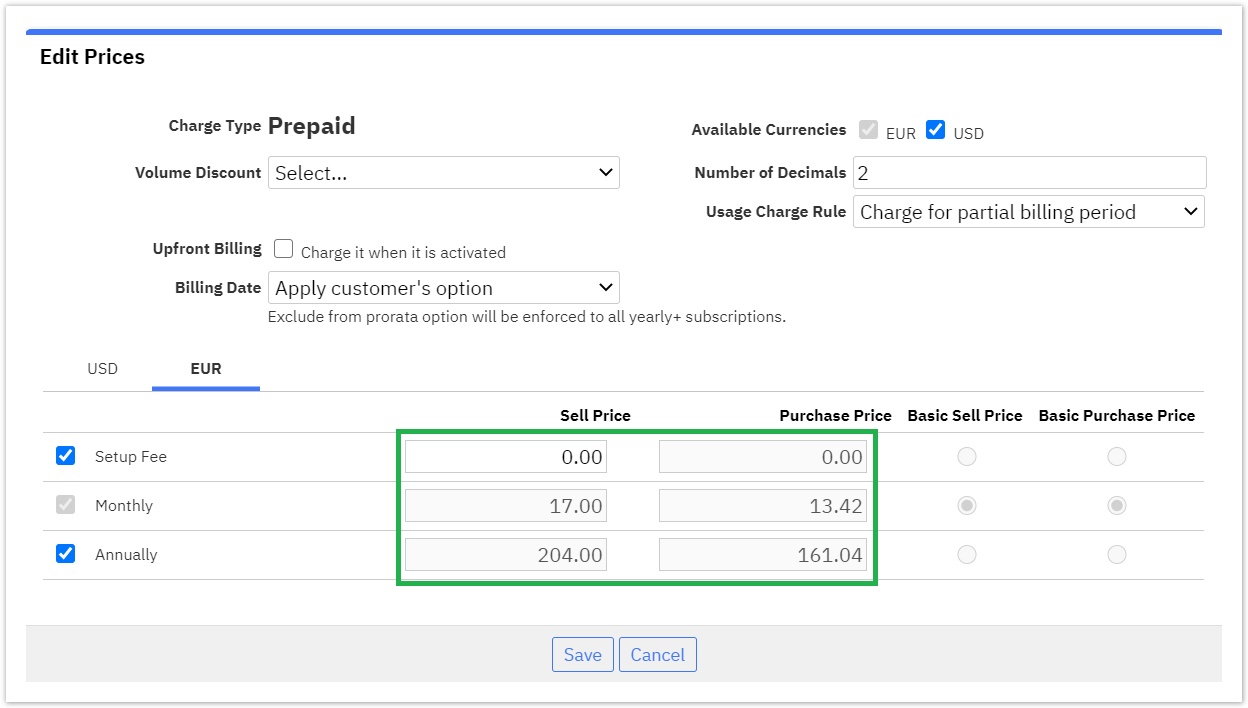
The sell and cost prices of a Bundle are updated automatically when the prices of the included products change. If for example, a product participates in a Bundle with a discount on its sell price, changing the sell price of the product will change automatically the sell price of the Bundle too.
Tax for a Bundle Product
Taxation for Bundle products has some differences from the taxation of normal products. Each Bundle must have its own tax. Since Bundles have no product type, the BSS user must add the Bundle at the tax(es) he wants to be applied. To do so, the BSS user can navigate to BSS Setup > Administration > System Options > Taxes.
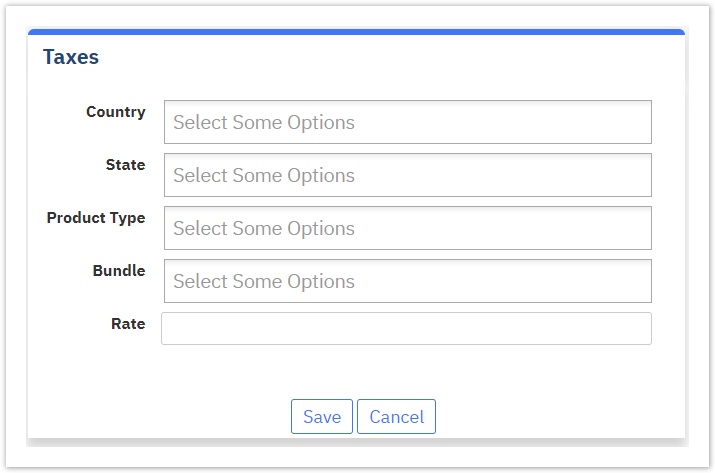
As soon as the BSS user clicks on the Bundle's field, a list of all the available Bundles appears. The "Product Type" field will be unavailable while the "Countries" and "States" fields are available for selection and in case of no selection the options "All Countries" and "All states" will be selected automatically. In case none is selected, no tax will be applied at any Bundle. In case the BSS user selects more than one Bundles they will be displayed at the record below separated with commas. In case the BSS user chooses a Bundle to apply the tax, then this specific tax, cannot be applied to simple products/product types. After saving the tax configuration, the Record could look similar to the following one:
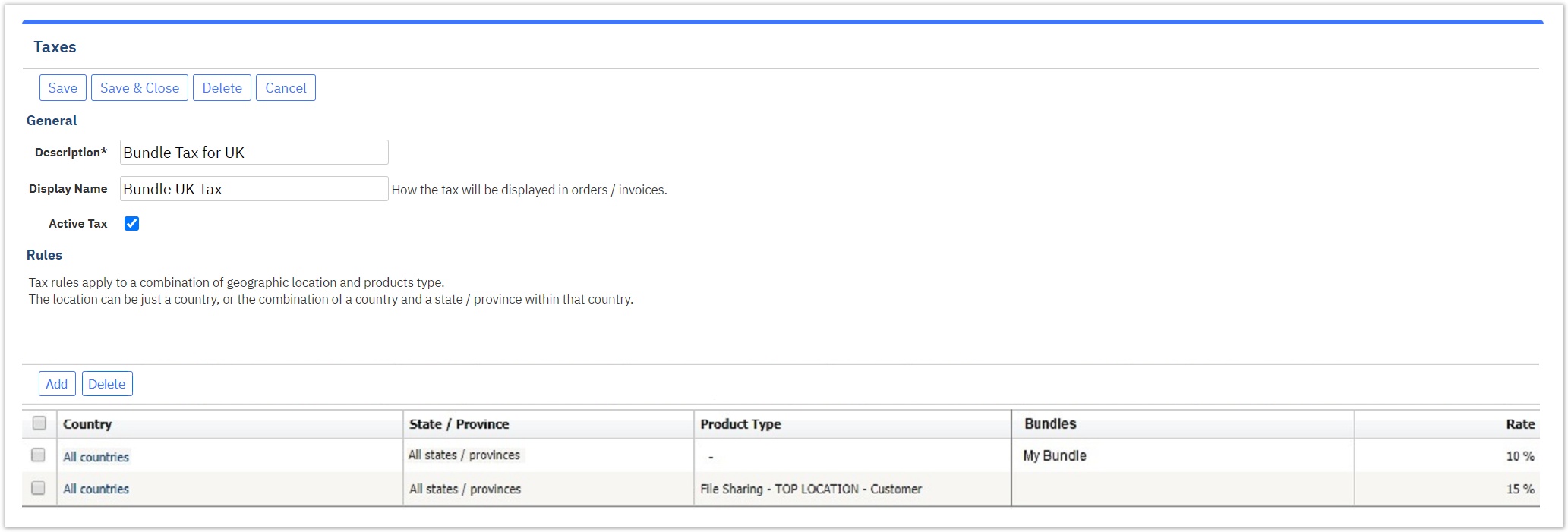
Each tax where the Bundle is assigned should be applied at the corresponding Bundle's purchase.
Bundle Product Terms of Use
Since a Bundle product is more of a container rather than an actual product, it will not have its own Terms of Use. However, given that its sub-products have their own Terms of Use, the Bundle product will utilize those.
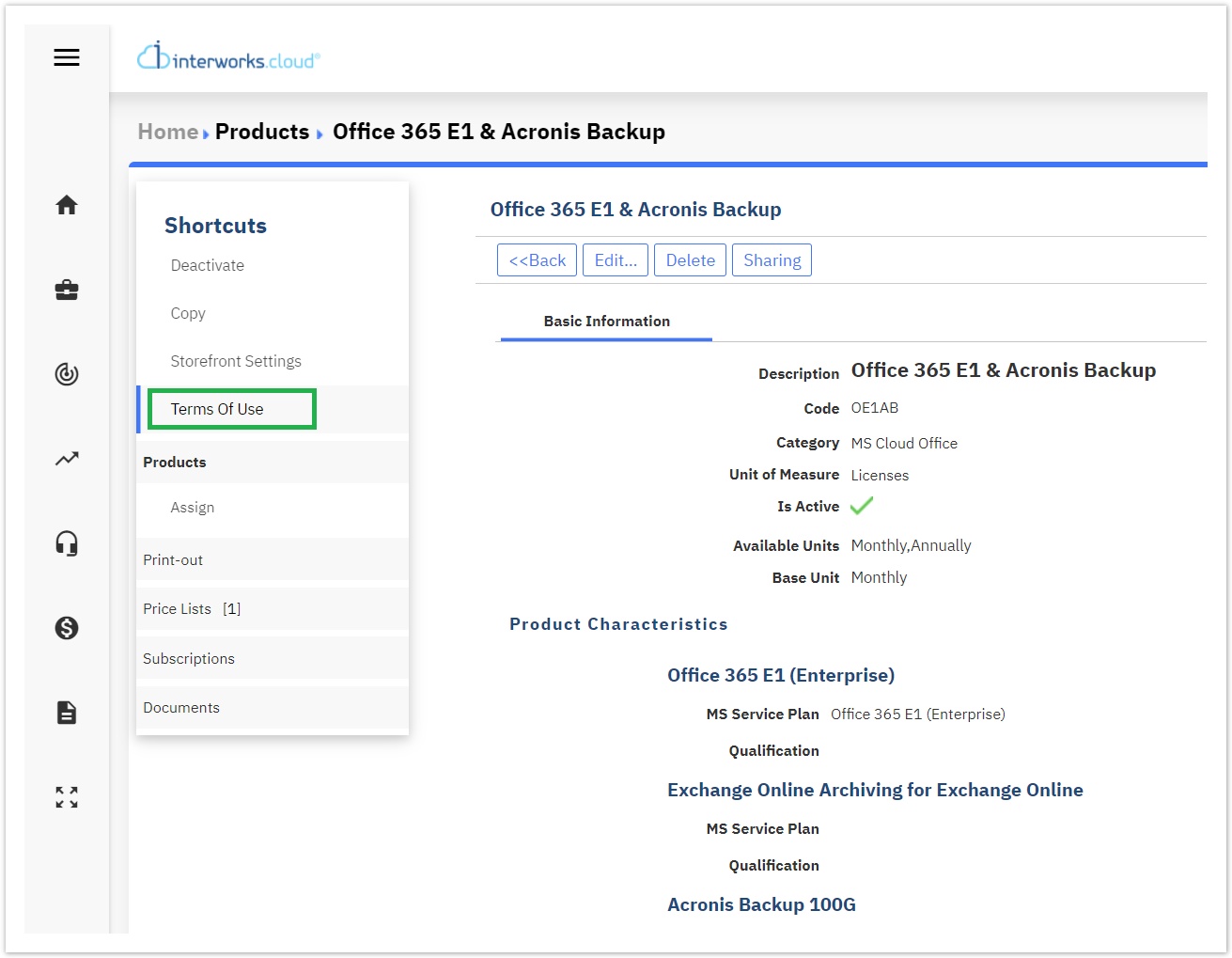
After enabling the Terms of Use, at the pop-up, all the terms of the sub-products are displayed one after the other in the Storefront, in succession, separated by a line and the name of the products that the terms refer to.

Publishing a Bundle Product on Storefront
For publishing a Bundle product on the Storefront, you have to select the shortcut "Storefront Settings", located under the Bundle's view page.
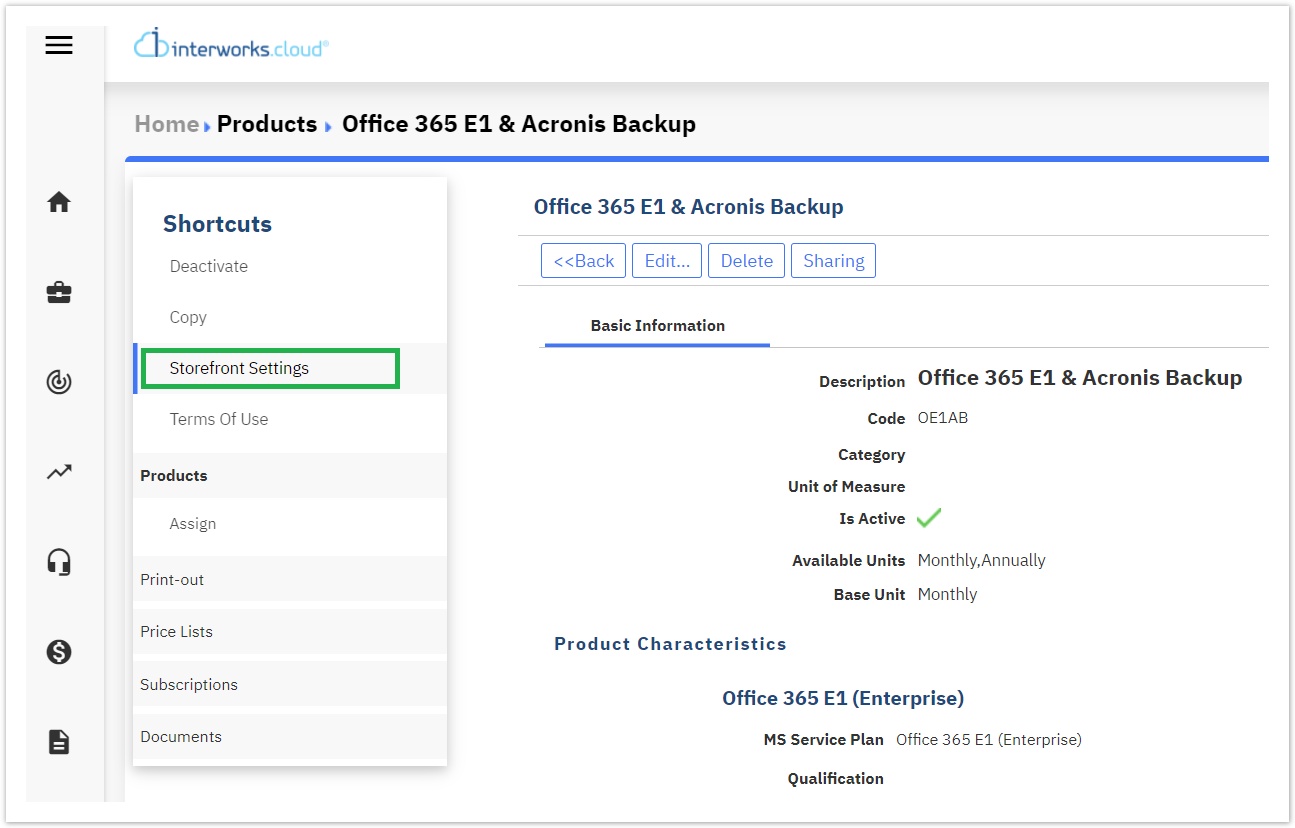
Afterwards, on the Storefront Settings page that appears, you can select the "Publish to Storefront" checkbox, for the Bundle product to be visible inside your Storefront so that your customers and resellers can order it.
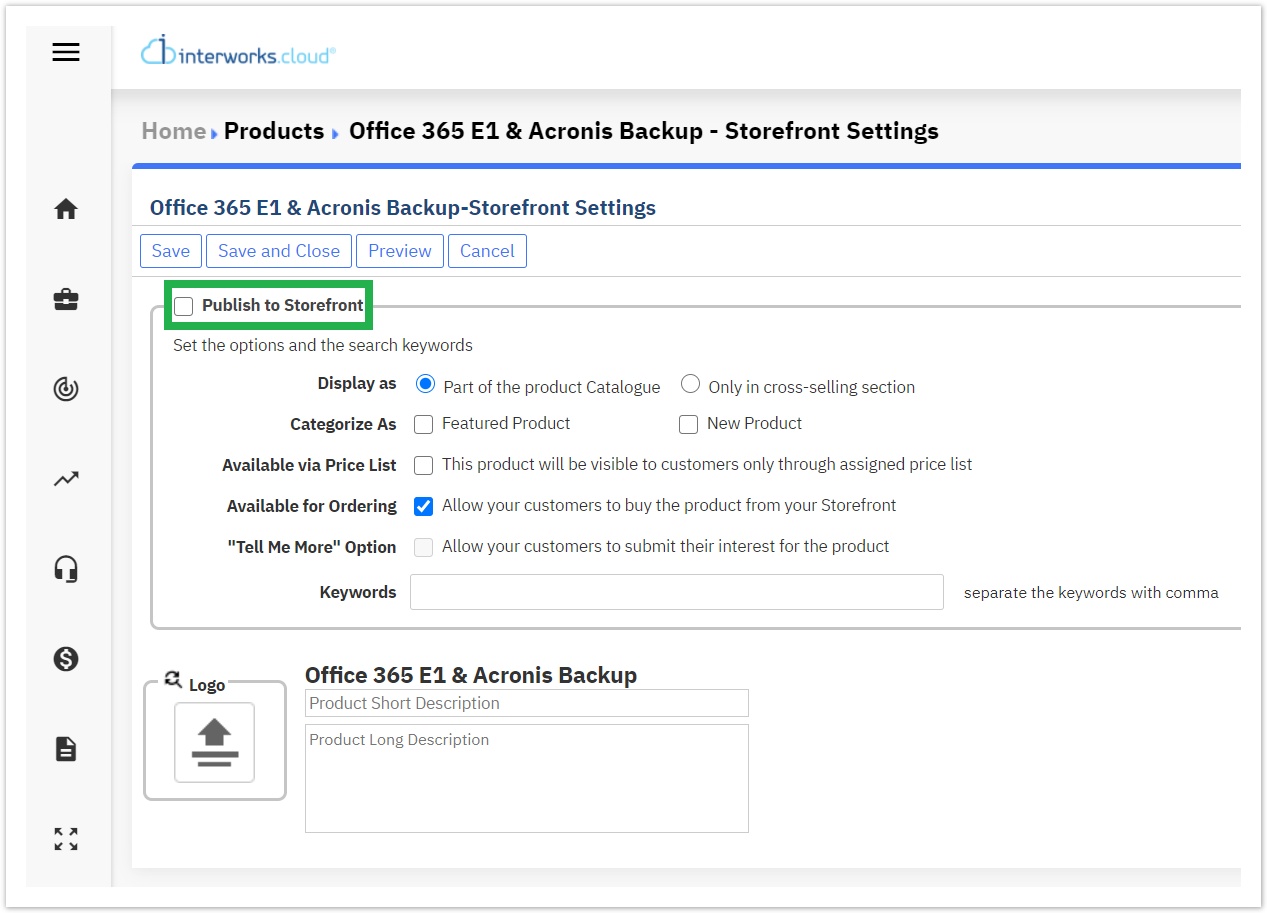
| Rw ui textbox macro | ||
|---|---|---|
| ||
Double-Checking the Storefront Settings of All the Bundled Sub-Products It is of crucial importance to double-check whether all the Bundle's sub-products have in their Storefront Settings the "Publish to Storefront" checkbox enabled. If one of them does not have enabled this checkbox, then the Bundle will not appear in the Storefront. |
Lastly, you need to click on the Save or Save and Close button in order to conclude the publishing of the Bundle to the Storefront.
As a result, the Bundle product will now be visible inside the Storefront as well as available for ordering. You can, of course, add marketing material such as a Logo as well as a short and a long description but nothing more, since the majority of the Bundle's marketing material is automatically been created by the marketing material found within its sub-products.
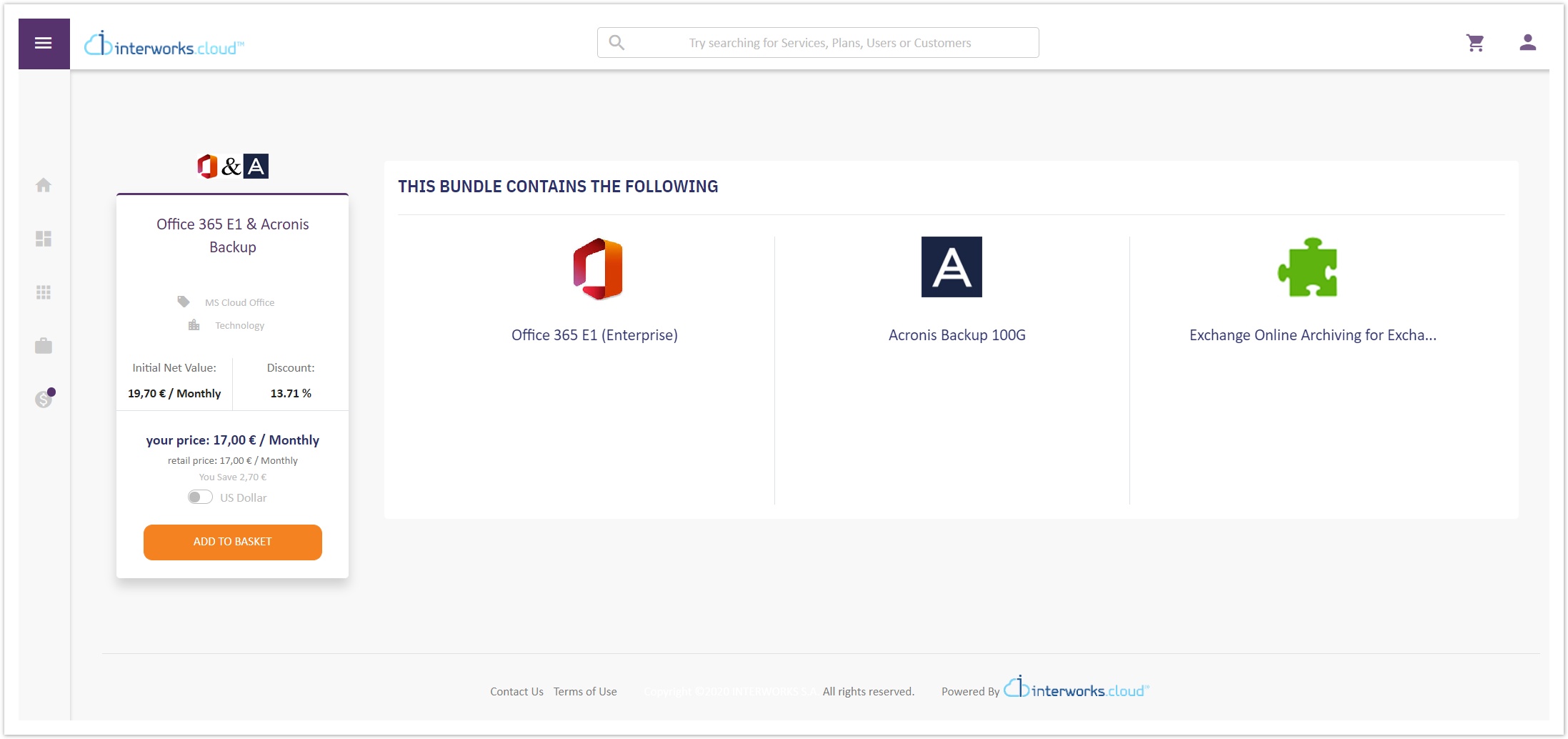
Adding Bundle Products in Product Groups
Bundle products are capable of participating in product groups via the classical procedure of adding a product inside a product group. As a result, the BSS user is able to add a Bundle product in a product group. However, this action can only be performed if at least one of the sub-products has the product type of the group. So, during the product group creation, the pop-up that is being displayed when a BSS user clicks on "Add Product" will also display the Bundles too, that at least one of its sub-product has the group's product type even though the Bundle has no product type. Also, the Bundle products that are added inside a product group will be flagged as "Bundle" so that they are distinguishable from the rest products of the group.
In the following screenshot, the view of a product group with assigned Bundle and products is displayed. Add-ons with their associated characteristics are also displayed normally but not in this exemplary screenshot.
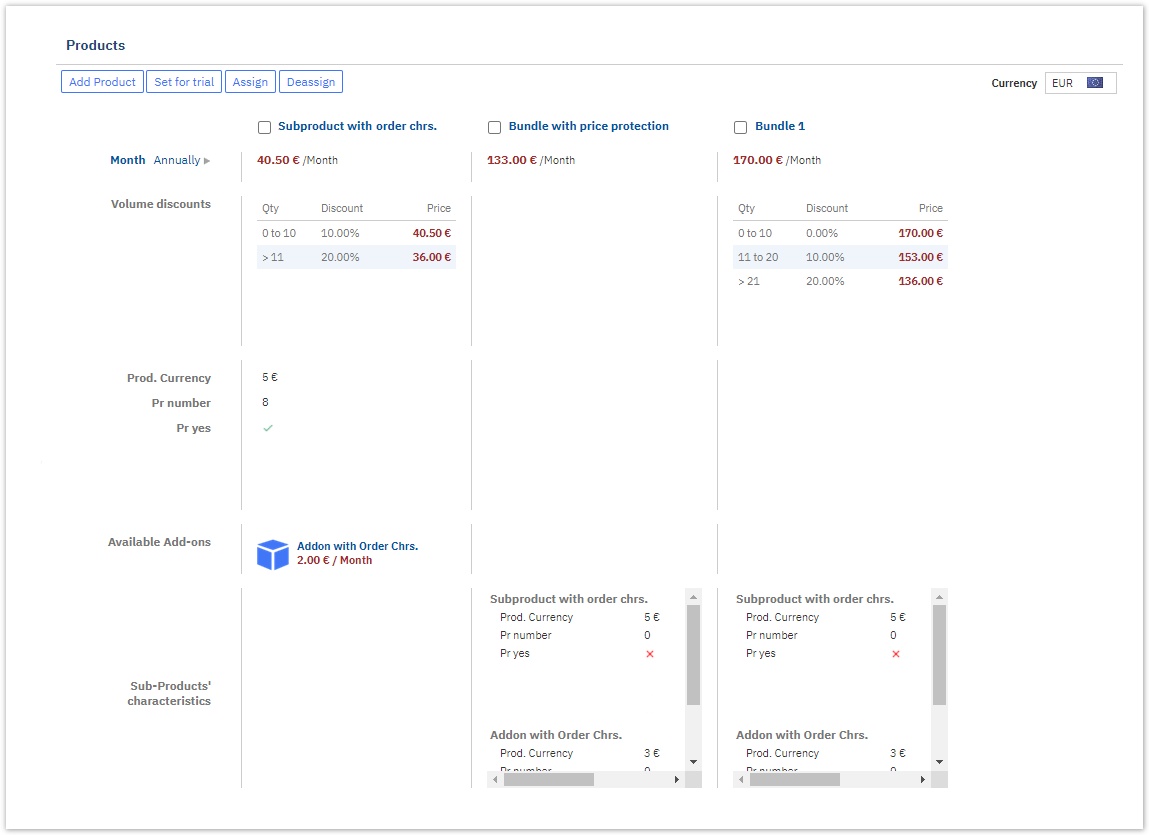
Selecting a Bundle Product From a Product Group
As already mentioned in the "Creating a Bundle Product" page, Bundle products can be a part of a product group and as such, they can be displayed in the Storefront as part of Editions & Pricing, so that the end-customer can order them.
However, there are some minor changes that need mentioning. More specifically, in the section where the product characteristics are being displayed these characteristics are the ones coming from the Bundle's sub-product that has the group's product type. All the other sub-products' characteristics are displayed under an extra section labeled "Sub-Products Characteristics". Other than the abovementioned information, the Bundle products are available for purchase via Storefront even when they participate in a product group.
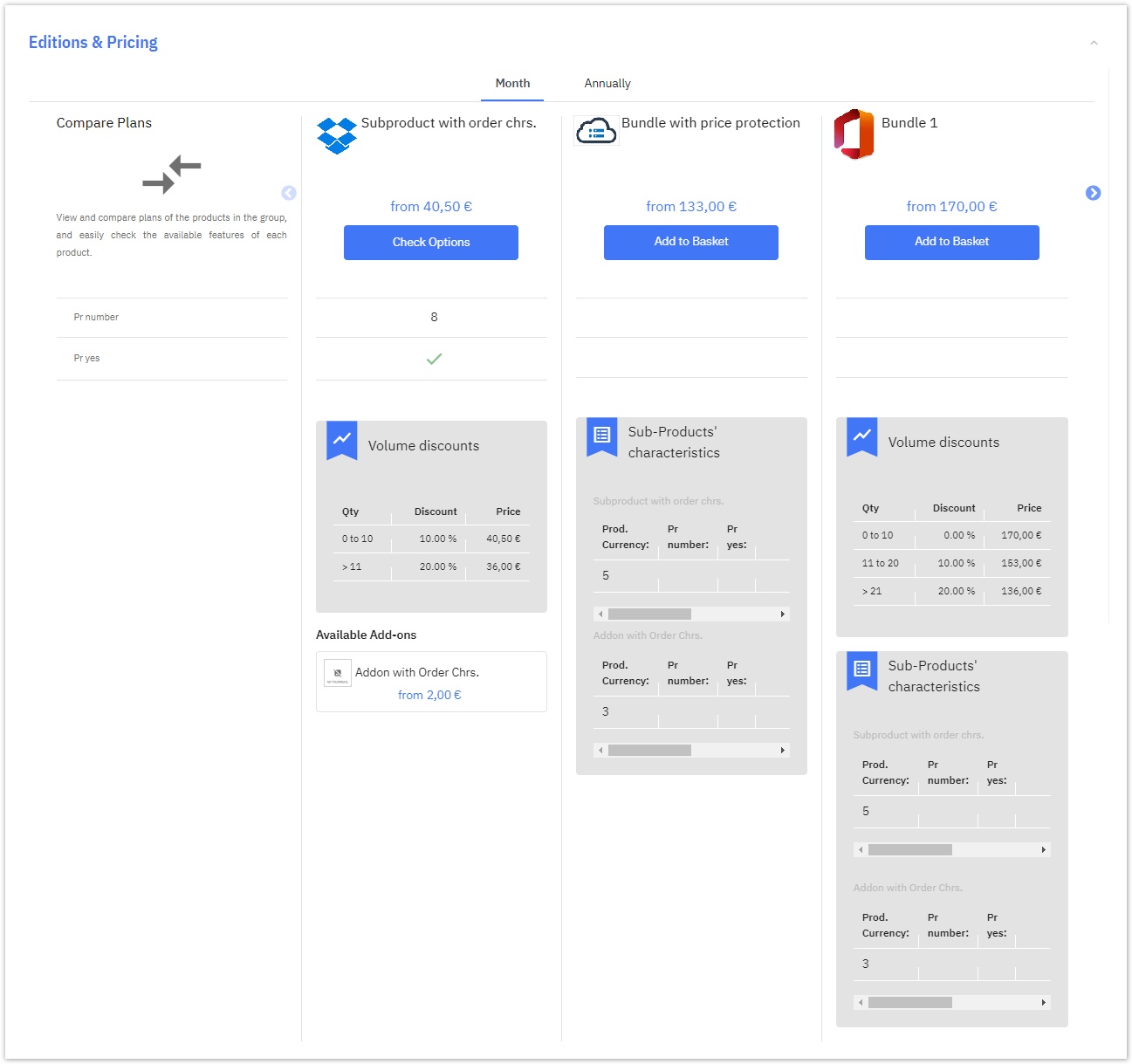
Table of Contents
| Table of Contents | ||
|---|---|---|
|
